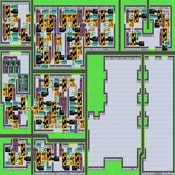
Huntsman
Huntsman challenges the player to navigate a dark and dangerous world by using stealth, intuition, and careful observation. It’s a game where being seen can mean starting over, and being heard can invite disaster.
Core Gameplay Focus: Observation Over Action
Rather than relying on fast reflexes or weapons, Huntsman puts a strong emphasis on paying attention. Visual and audio cues are built into the environment to guide the player through each encounter.
- Light sensitivity plays a major role; staying in shadows keeps you safe.
- Sound design is crucial — footsteps, breathing, and distant cries can hint at danger.
- Interactive elements like locked doors, traps, and clues encourage slow and steady progress.
Dynamic Environment and Nonlinear Exploration
The structure of Huntsman encourages revisiting previous areas with new tools or insights. Unlike linear games, exploration is often required to move forward. Sometimes the path isn’t direct, and players must piece together puzzles from fragmented information found across the map.
- Check walls, floors, and ceilings for signs or carvings.
- Use found notes or symbols to decode paths.
- Watch for hidden routes revealed by light or movement.
Optional Modifiers and Challenge Options
For those looking to push their abilities further, Huntsman includes optional modifiers that can alter how threats behave or how often supplies appear. Some modifiers remove checkpoints altogether or increase the unpredictability of encounters, making every decision even more critical.
Huntsman stands out for how it blends psychological tension with gameplay strategy, encouraging smart choices and keen attention to detail rather than brute force solutions.





































